Orion's Belt
Videos
Page
Orion's Belt or the Belt of Orion, also known as the Three Kings or Three Sisters, is an asterism in the constellation Orion. It consists of three bright stars – Alnitak, Alnilam and Mintaka – which are blue supergiant stars with fainter companions.
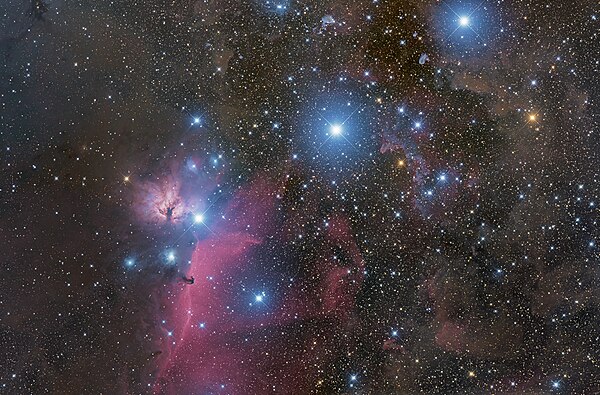
Orion's Belt and nebulosity, including the Flame Nebula (left) and Horsehead Nebula (lower left) named after a relatively small dark cloud, rotated 90° somewhat resembling a seahorse
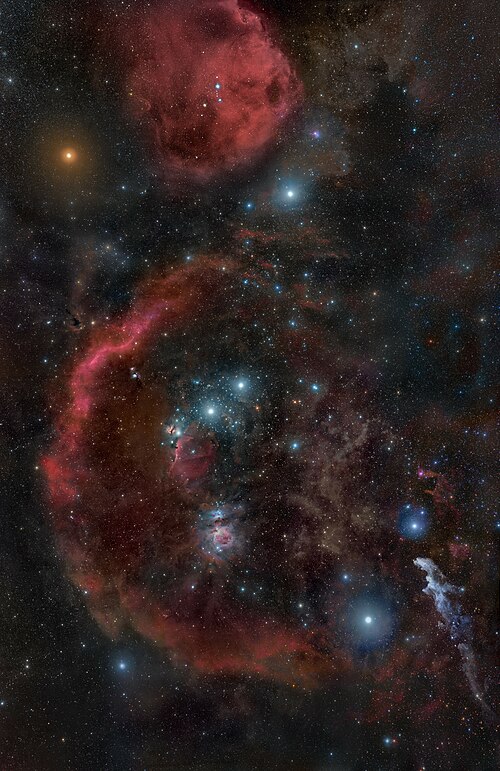
In this broader view, the belt (the three so-called stars in the center) is seen in relation to nearby features in the Orion constellation.
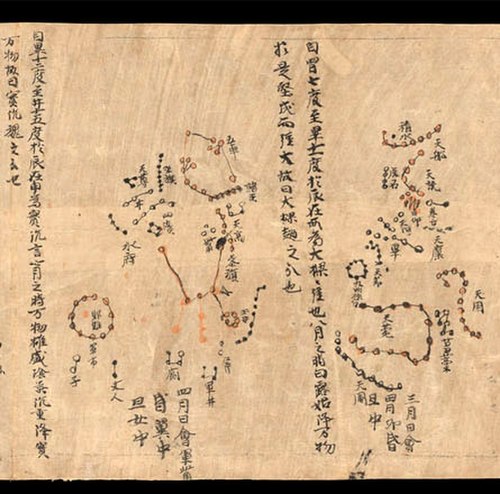
Dunhuang Star Atlas – Orion
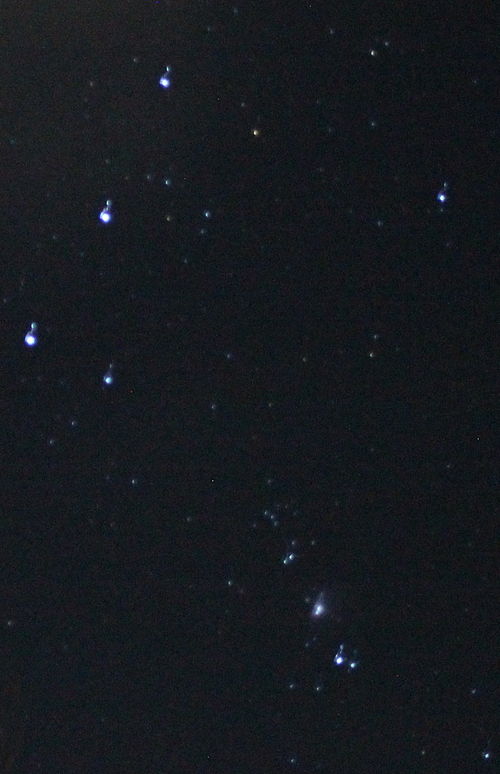
Orion's belt at top left, Orion's sword at bottom right
Asterism (astronomy)
Videos
Page
An asterism is an observed pattern or group of stars in the sky. Asterisms can be any identified pattern or group of stars, and therefore are a more general concept than the 88 formally defined constellations. Constellations are based on asterisms, but unlike asterisms, constellations outline and today completely divide the sky and all its celestial objects into regions around their central asterisms. For example, the asterism known as the Big Dipper comprises the seven brightest stars in the constellation Ursa Major. Another is the asterism of the Southern Cross, within the constellation of Crux.
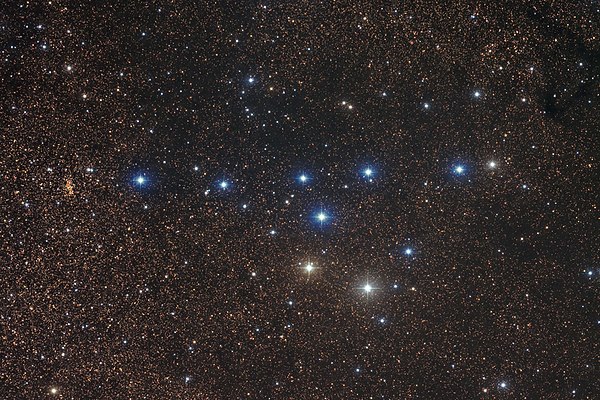
A picture of stars, with a group of appearingly bright blue and white stars. The bright stars together are identified as the asterism Coathanger resembling a coathanger, in the constellation Vulpecula.
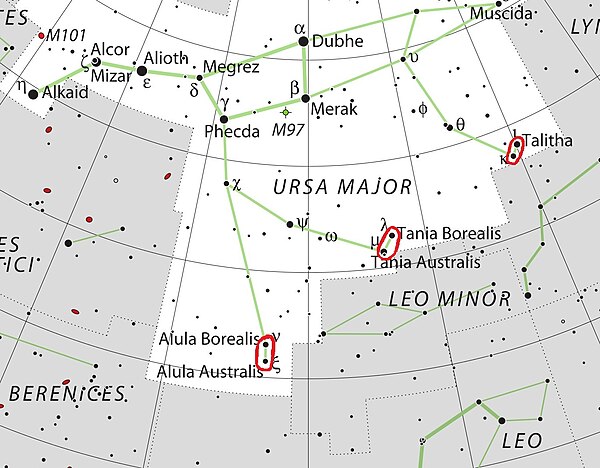
Three Leaps of the Gazelle asterism
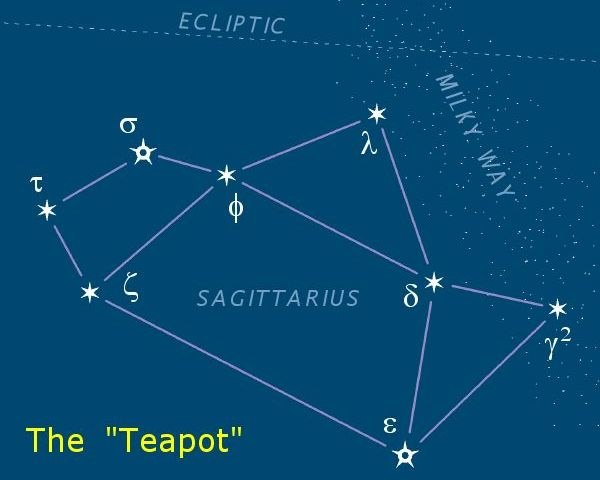
The "Teapot" asterism in Sagittarius. The Milky Way appears as "steam" coming from the spout.

The "37" or "LE" of NGC 2169, in Orion. It is visible with binoculars.